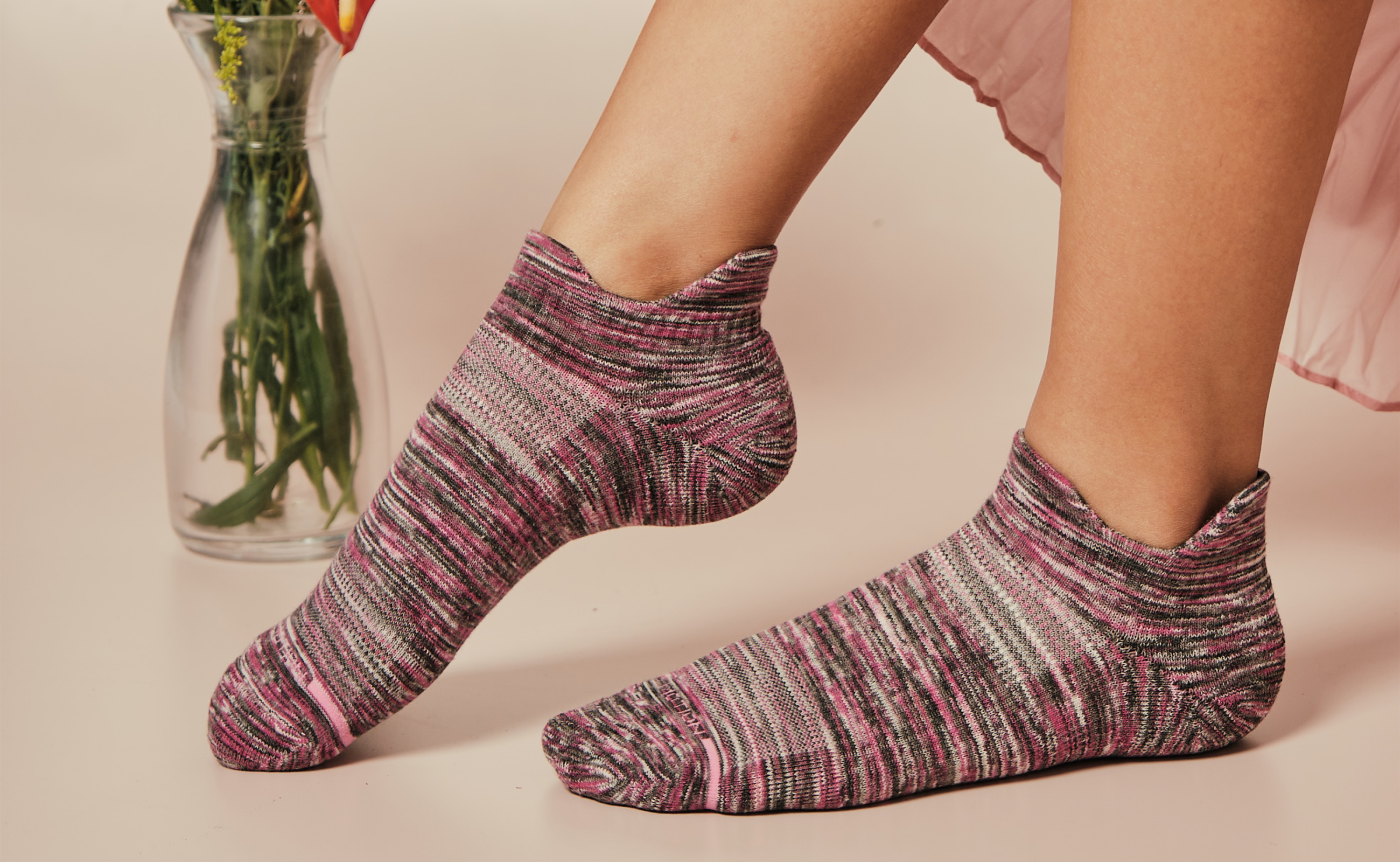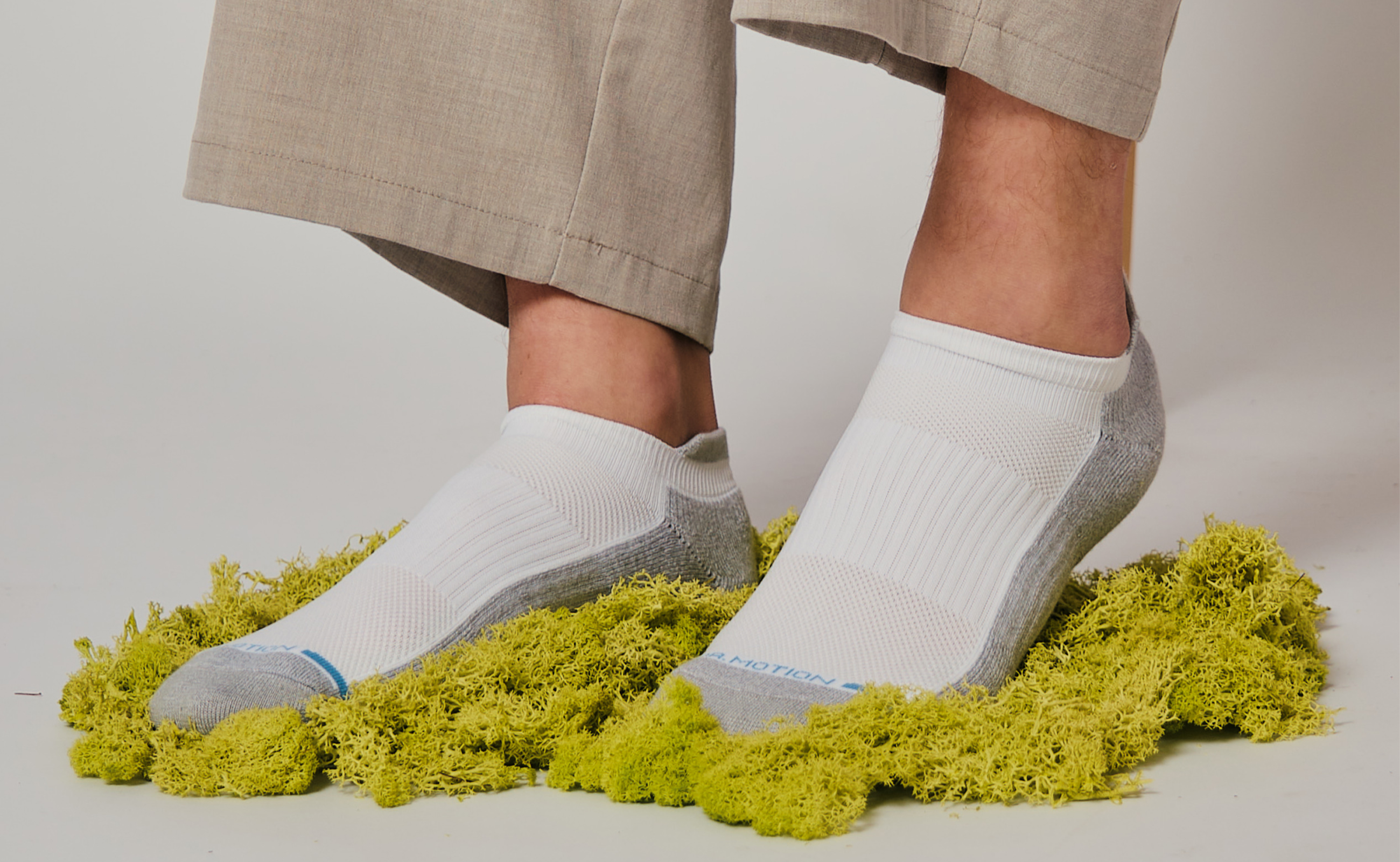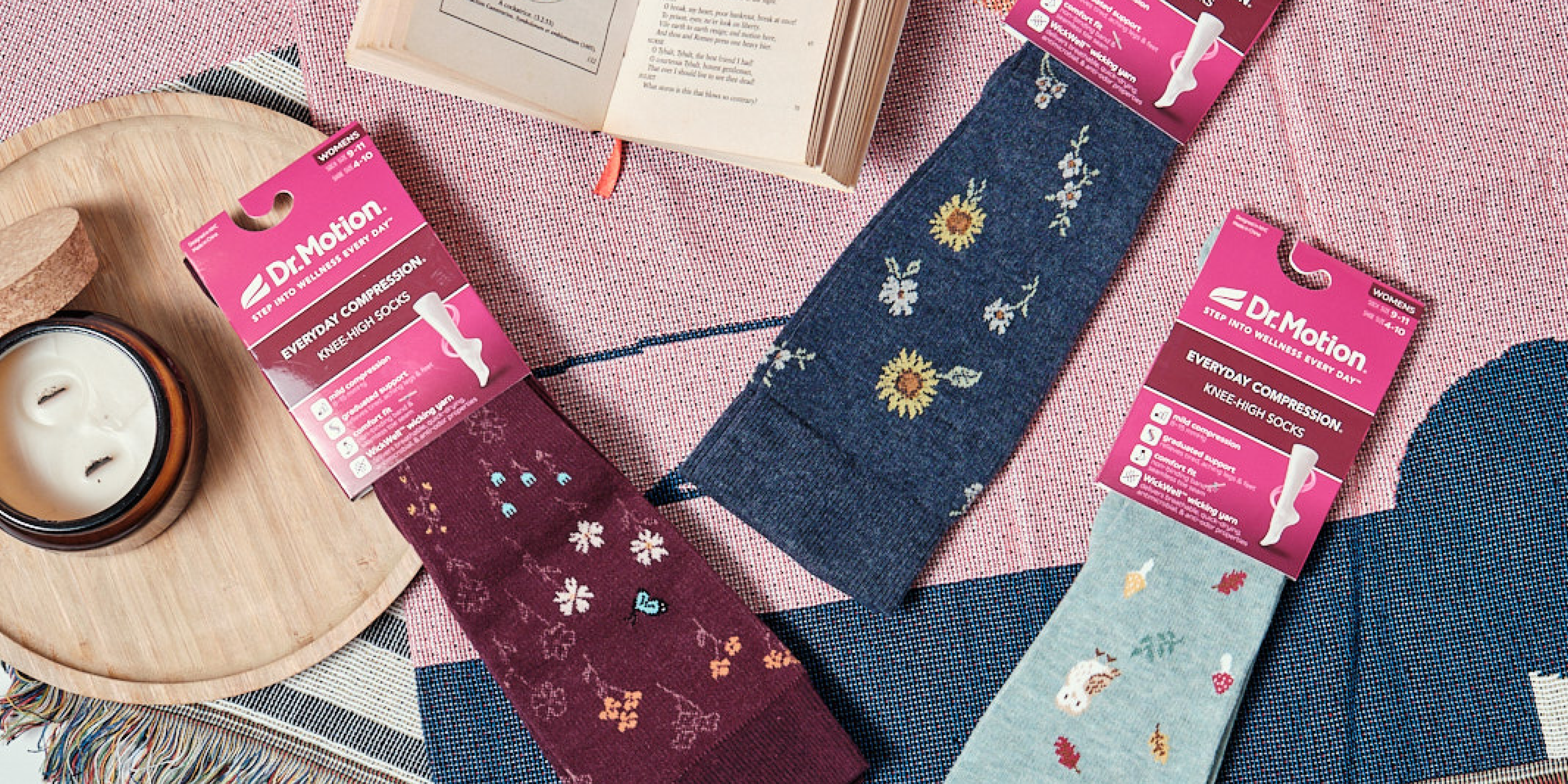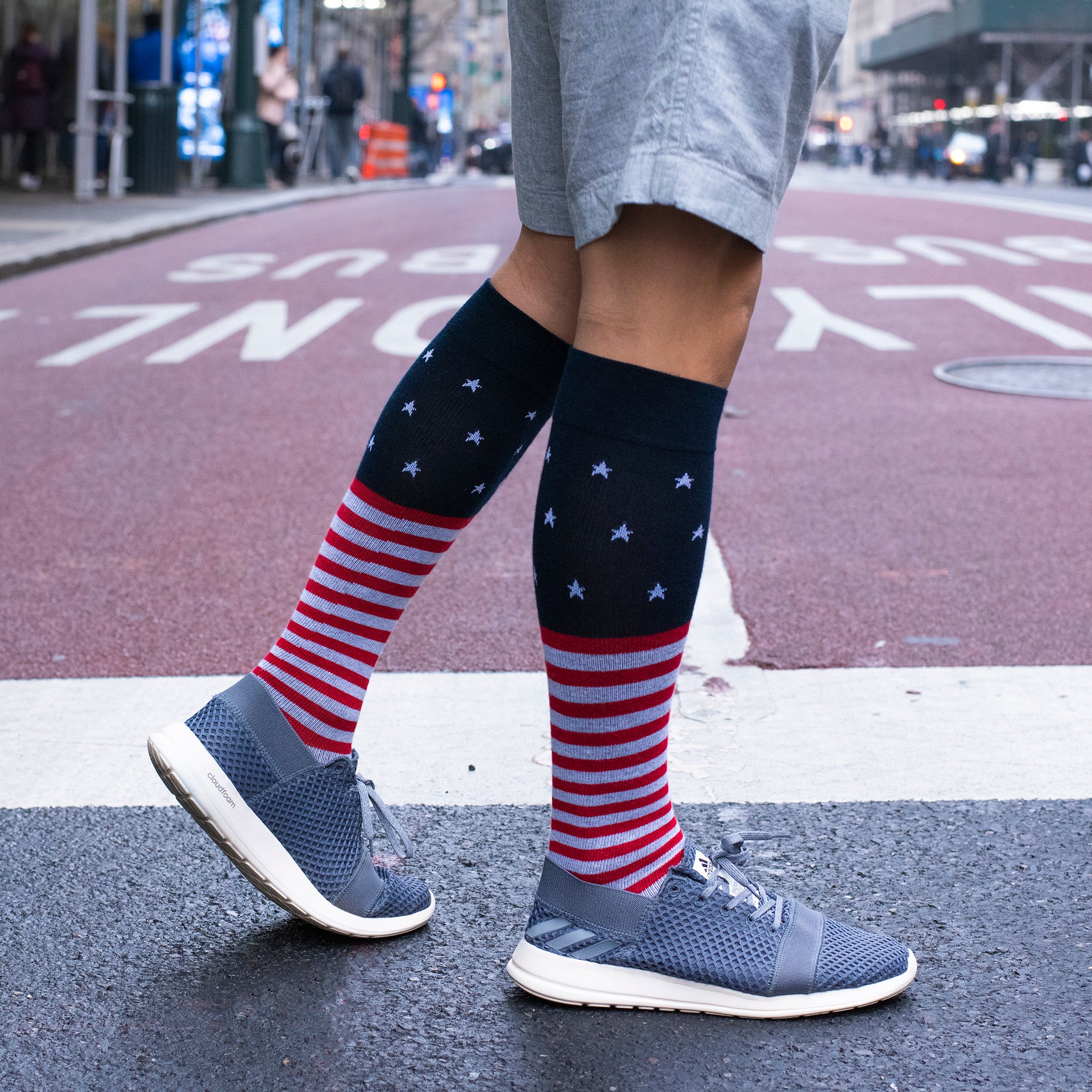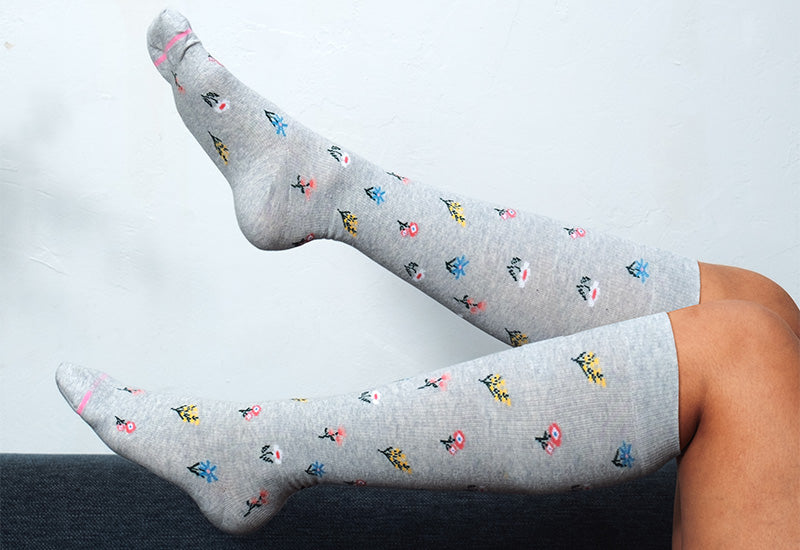Compression Socks After Hip Replacement: A Key to Smooth Recovery
Undergoing hip replacement surgery is a life-changing procedure, relieving those suffering from hip pain and improving mobility. However, the recovery process can be a challenging journey, requiring proper care and rehabilitation. One often-overlooked but crucial part of post-surgery recovery is the use of compression socks. In this blog, we'll explore their role in recovery, how they should be used, and how to choose the right pair for your needs.
What are Compression Socks? A Closer Look
Graduated compression socks are specially designed garments that apply gentle, consistent pressure to the legs and feet. They help support healthy circulation by encouraging blood flow back to the heart. This pressure is strongest at the ankle and gradually decreases as the sock moves up the leg, which is known as graduated compression. You can find them in varying lengths, depending on the level of compression needed and the type of treatment required.
Compression Socks Benefits for Hip Replacement Recovery
Knee-high compression socks can play a pivotal role in easing the recovery period. Here are several advantages:
-
Improved Circulation
After surgery, your body may have trouble maintaining proper blood flow, especially in the lower limbs. Knee-high compression socks help stimulate blood flow, preventing stagnant blood from pooling in the legs and reducing the risk of Deep Vein Thrombosis (DVT), a condition where blood clots form in the deep veins of the legs.
-
Reduced Swelling and Edema
Swelling in the legs and feet is a common aftereffect of surgery. Knee-high compression socks help to reduce this swelling by promoting the movement of excess fluid out of the lower limbs.
-
Pain Relief and Comfort
Knee-high compression socks provide valuable comfort and support during the recovery process, primarily by enhancing circulation and helping to reduce swelling in the legs and feet. This improvement in circulation can alleviate discomfort caused by fluid buildup and lower limb fatigue.
-
Faster Recovery
Because knee-high compression socks promote healthy circulation, they play a supportive role in the recovery process. By reducing swelling and improving blood flow, they help create a more comfortable recovery environment and lower the risk of complications, such as blood clots.
-
Prevention of Post-Operative Complications
Knee-high compression socks also help prevent complications like venous stasis and DVT, especially important in the initial phase of recovery when patients may be less mobile. This is particularly beneficial for individuals with a history of circulatory issues or limited movement during the recovery process.
When and How Long Should You Wear Compression Socks After Hip Surgery?
After hip replacement surgery, your healthcare provider will guide you on when to start wearing knee-high compression socks. Generally, it's recommended to begin wearing them as soon as possible, particularly during the initial phase. This is because the risk of blood clots is highest in the first few weeks following surgery.
The duration also varies depending on individual circumstances and your doctor’s advice. Typically, they are worn for at least 4 to 6 weeks, and in some cases, up to 12 weeks post-surgery, especially during the day when you are most active.
Signs You Can Stop Wearing Compression Socks
The decision to stop wearing knee-high compression socks should be made in consultation with your healthcare provider. While signs such as reduced swelling, walking without discomfort, and normal blood flow can suggest that you may be ready to discontinue their use, it’s important to remember that recovery is individualized.
In some cases, continued use may still be beneficial, especially for those with underlying conditions like poor circulation. At this stage, individuals may transition from wearing medical-grade knee-high compression socks, which typically have a higher pressure level (20-30 mmHg or 30+ mmHg), to mild knee-high compression socks (8-15 mmHg) for comfortable, ongoing support. Always consult with your healthcare provider for guidance tailored to your specific recovery needs.
How to Put On Compression Socks After Hip Replacement?
Putting on compression socks after hip replacement surgery may seem like a challenge at first, but with a few simple techniques, you can do it with ease.
-
Sit down and elevate your leg to make it easier to slip the sock on.
-
Gently gather the sock from the top, creating a "donut" shape with the opening.
-
Place your foot into the sock and pull it gently over your toes.
-
Slowly roll or pull the sock up your leg, making sure there are no wrinkles, as they can lead to pressure points and discomfort.
How to Take Off Compression Socks After Hip Replacement?
Taking off knee-high compression socks can be just as tricky as putting them on. Here's how to do it properly:
-
Begin by rolling down the sock from the top, using your fingers to gently pull it down toward the foot.
-
Avoid pulling too quickly, as these are made from tight, elastic materials that could stretch or rip if handled roughly.
-
If needed, support your leg with your other hand to prevent straining the hip or causing discomfort while removing the sock.
Top Tips for Selecting the Right Knee-high Compression Socks
Here are some factors to consider along with an even fit:
-
Compression Level
Knee-high compression socks come in different pressure levels, usually measured in millimeters of mercury (mmHg). For post-surgery use, a moderate compression level (15–20 mmHg or 20-30 mmHg) is generally recommended, but always check with your doctor.
-
Material
Look for socks made from breathable, moisture-wicking materials like nylon, spandex, or cotton. These fabrics will help maintain dryness and prevent overheating.
-
Design Features
A seamless toe design is crucial to avoid irritation, blisters, or discomfort caused by traditional seams, which can be especially problematic after surgery when your skin is more sensitive. Additionally, look for socks with a terry inner lining, which provides extra cushioning and reduces pressure points. Their plush interiors prevent chafing, making it ideal for extended wear.
Wrapping Up: Your Path to a Faster Recovery
For those seeking effective, refined support following hip replacement surgery, our collection of knee-high compression socks offers gentle, consistent compression from foot to calf. Here’s what makes them the best fit:
-
Mild (8-15 mmHg) to moderate (15-20 mmHg) compression, with wide calf options available in the mild compression range
-
Breathable cotton blend for exceptional comfort and softness
-
Anti-microbial and anti-odor technology to keep you fresh
-
Smooth, reinforced toe crafted for enduring comfort and durability
With these thoughtfully designed features, our knee-high compression socks are the quintessential choice for a swifter, more comfortable recovery. Don’t wait—explore our collection and embrace your journey to wellness with us!
Disclaimer: This article provides information solely for educational purposes, including but not limited to text, graphics, images, and other materials contained herein. This article is not intended to substitute for professional medical advice, diagnosis, or treatment. Always seek the advice of your physician or another qualified healthcare provider with any questions you may have regarding a medical condition.


